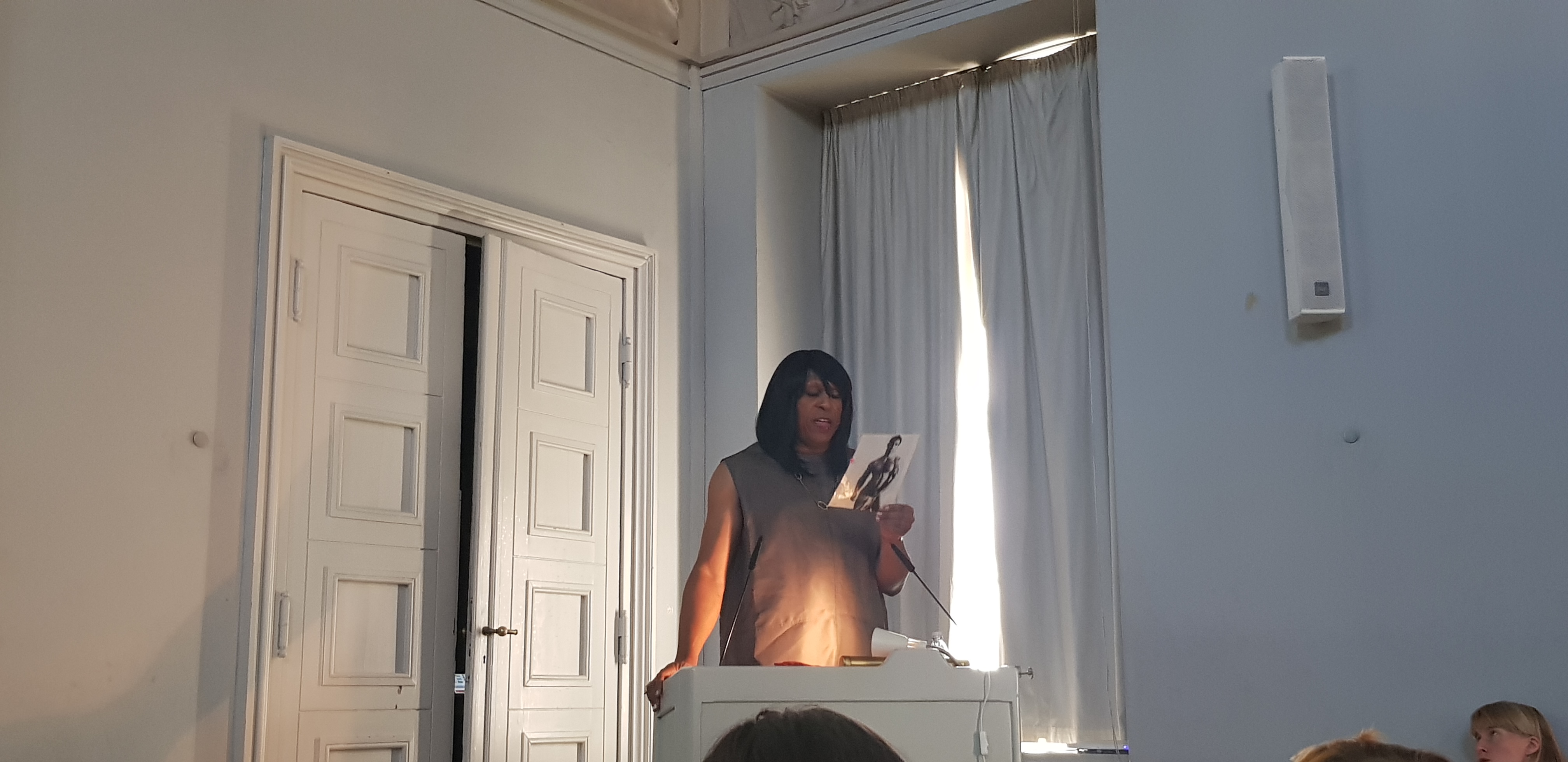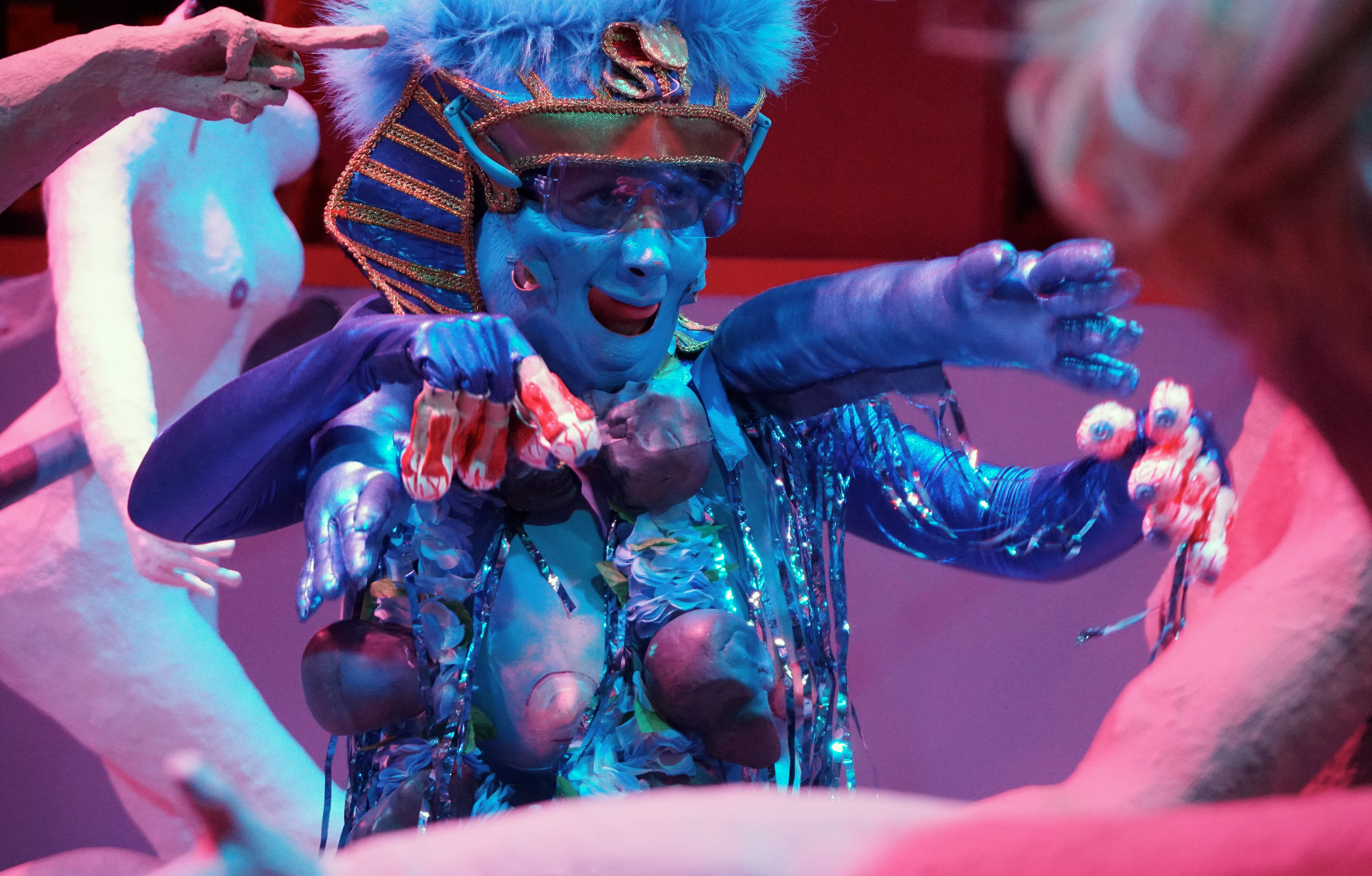 Foto: Lilith Performance Studio / Petter Pettersson
Foto: Lilith Performance Studio / Petter Pettersson
Publiken samlas utanför Lilith Performance Studio i väntan på att bli insläppta bakvägen uppför en brant smal trappa. Snart ska det bli helt självklart för oss att vi ska slåss tills lämmarna trillar av och inälvor trillar ut. Game On av Molly Lowe är lika vacker som obekväm och svårbegriplig.
Hemliga klubbar och slutna sällskap tänker jag på när vi står och köar, jag påminner mig om att Game On är någon slags performance-sport event som vi ska gå på. För en stund låtsas jag att det här är lika självklart som det för många är att köa in till en fotbollsmatch, och leker med tanken på att vi går hit regelbundet för att titta på matcherna som pågår här. Egentligen vet jag inte alls vad som väntar.
Flera i publiken känner jag sedan tidigare, vissa är bekanta ansikten från Malmös kulturliv. Biljetterna för alla föreställningar är redan slutsålda genom sms-bokning, till ett pris som publiken själva fått bestämma. På vissa sätt är vi kanske ett slutet hemligt sällskap som samlats här för att ta del av vår sorts sportevent.
Publiken delas upp i det röda och det blå laget. En blå kropp med intensiva svarta ögon klär på mig min matchtröja, ett blåskimrande skynke med en siffra som hängs över min kropp, en intim situation där jag kände mig trygg och väl omhändertagen. Jag blir sedan guidad vidare, jag får papperslappar och förstår att jag borde köpa en souvenir.
Kommersialism stod i focus när vi fick en bunt med papperslappar, det var en egentligen bara en obetydlig prick på dem. Snart förstod jag att de var pengar. Dessa sedlar blev snart värdefulla på riktigt, efter ett tag kom popcorn-försäljning och korv också ut. Jag tänkte väldigt mycket på att det här nu var mina saker som jag hade köpt, och funderade över vad jag hade råd att köpa mer.
Scenografin är häpnadsväckande två hela fotbollslag med nakna handskulpterade dockor kopplade till vridrattar på andra sidan sargen. Jag får snabbt en förståelse för vad som kanske kommer att hända. Ibland fick jag för mig att det var ett queert rum, kanske pga det pråliga, kostymerna och fiktionen och dragaspekten i karaktärerna. Det var något med det här färgglada som lurade in mig i att förstå det som en queer tematik. Men ofta försvann känslan av ett queert rum snabbt, eller den stämde aldrig riktigt. Kanske för att publiken fortfarande agerade som att det var en fotbollsmatch. Allt är inte queert som glittrar.
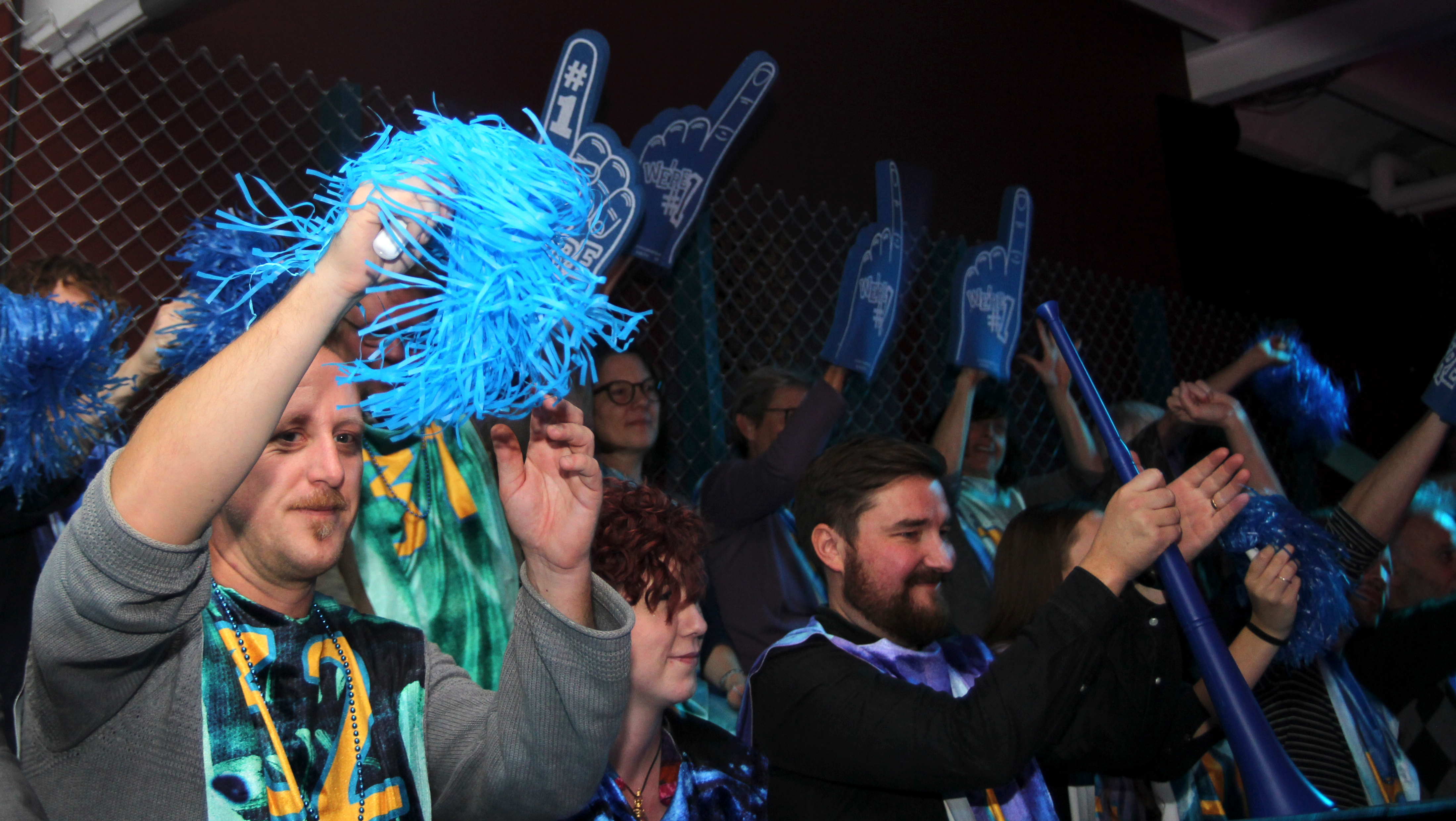 Foto: Lilith Performance Studio /Henrik Andersson
Foto: Lilith Performance Studio /Henrik Andersson
Det var ett maskulint rum, miljön var hård och kall, det färgglada här var alltid bara maskot-, karnevalestetik och fotbollsglitter. Jag hade köpt en blå hand att vifta med, en fotbollsassecoar som jag kunde känna mig bekväm med, men jag viste inte hur jag skulle hantera den. Jag är inte bekväm med att skrika och bröla. Jag började vifta lite med den, fläkta mig med den som en solfjäder, då tog min publikgranne upp sitt glitter och viftade lite med det men det kändes som att flera i publiken inte riktigt hängde med. Tillslut satte jag mig på skumgummihanden och använde den som sittkudde.
Spelet är verkligen igång, några i publiken väljs ut att snurra runt dockorna. Jag imponeras över hur Molly Lowe har fått allt i spelet att klaffa. Publiken i röda och blå laget tävlar nu så självklart mot varandra. Fast att vi kommit dit som en enad grupp. Det påminde om en fotbollsmatch men det var inte det. Jag tänkte på att nästa gång jag är på en fotbollsmatch kommer jag ha detta med mig. Jag kände att jag var utvald, att jag har ordnat detta för mig själv, att jag får gå på en fotbollsmatch som ser ut på det här sätet.
Ljudet av barnskrik och människor som gråter blandades med hejarop från publiken. Ljuset dämpades och rummet fylldes med rök. Snart inföll sig dessa vackra hemska verklighetsgripande momenten där jag fick rysningar och började tänka på människor som krigar. Människor som slåss för någonting som de inte vet vad det är, styrda av andra. Att det är helt självklart att vi går med på att dela upp oss i två lag och att det sedan är helt självklart att vi ska slåss tills lämmarna trillar av och inälvor trillar ut. Jag tänkte på krig såklart. Jag tror det här hände under ungefär tre gånger under föreställningen.
Berättandet kunde ha gjorts starkare om scenerna stått mer i kontrast mot varandra, och det kanske hade gjort det mer tillgänglig för mig som stundtals tyckte det blev lite långtråkigt, det hade också gjort det mer showigt. Men det kanske var viktigt att det fanns långtråkiga stunder mätt i show-mått, för det hör nog till ett sådant här arrangemang och gör det mer likt en fotbollsmatch. En spännande berättarteknik användes när vi fick följa karaktärerna bakom scenen med live kamera.
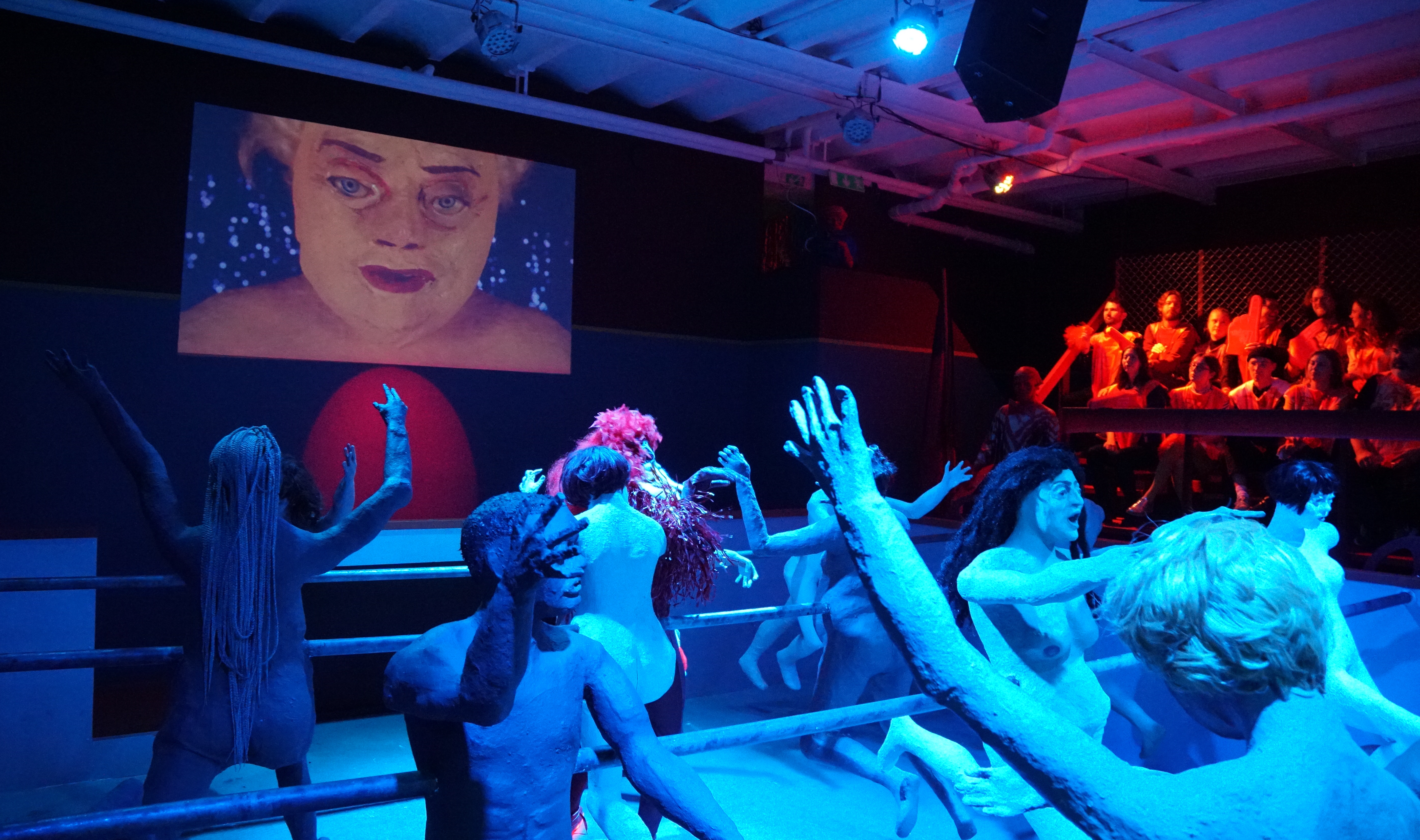 Foto: Lilith Performance Studio / Petter Pettersson
Foto: Lilith Performance Studio / Petter Pettersson
Det kan inte kan vara på riktigt, tänkte jag när jag såg vissa publikdeltagares reaktioner i spelet, ingen skulle väll leva sig in så i spelet? Efteråt kom jag i samtal med andra i publiken om upplevelsen, det kom då fram någon från publiken till mig och sa att allt var på riktigt. Den som sa det hade också skrikit ut ”Kasta bollen nu för i helvete så det går att spela!”
Delar av texten har utformats i samtal med Rasmus Raphaëlle Östebro.
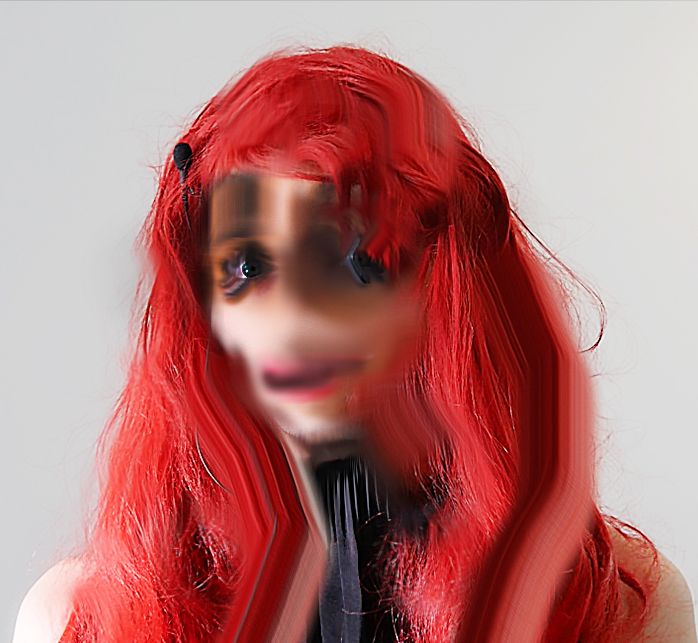
Influential Art Critic writing for Gallery Extra Magazine, Sun Times News and Gallery Extra TV.
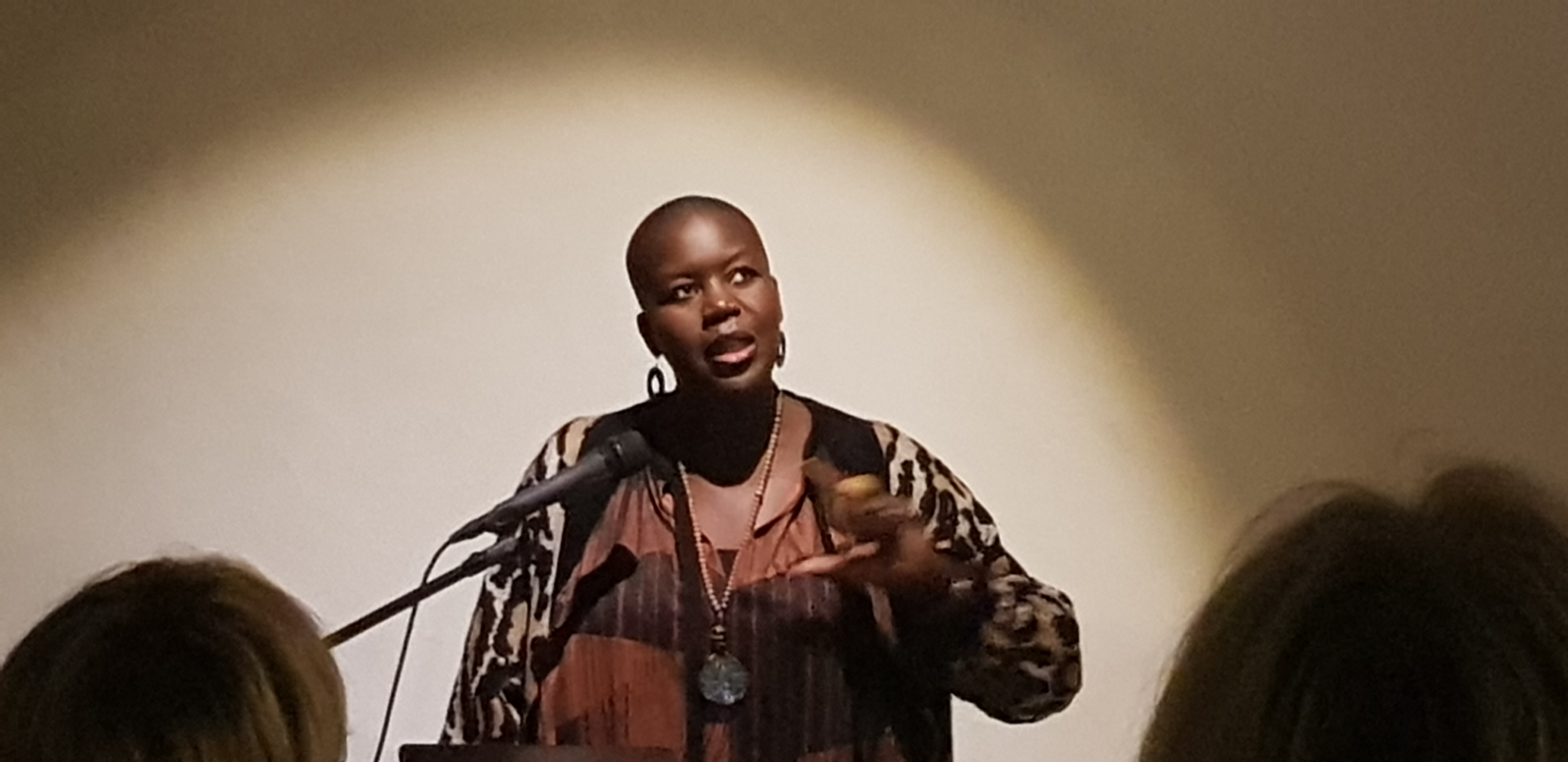
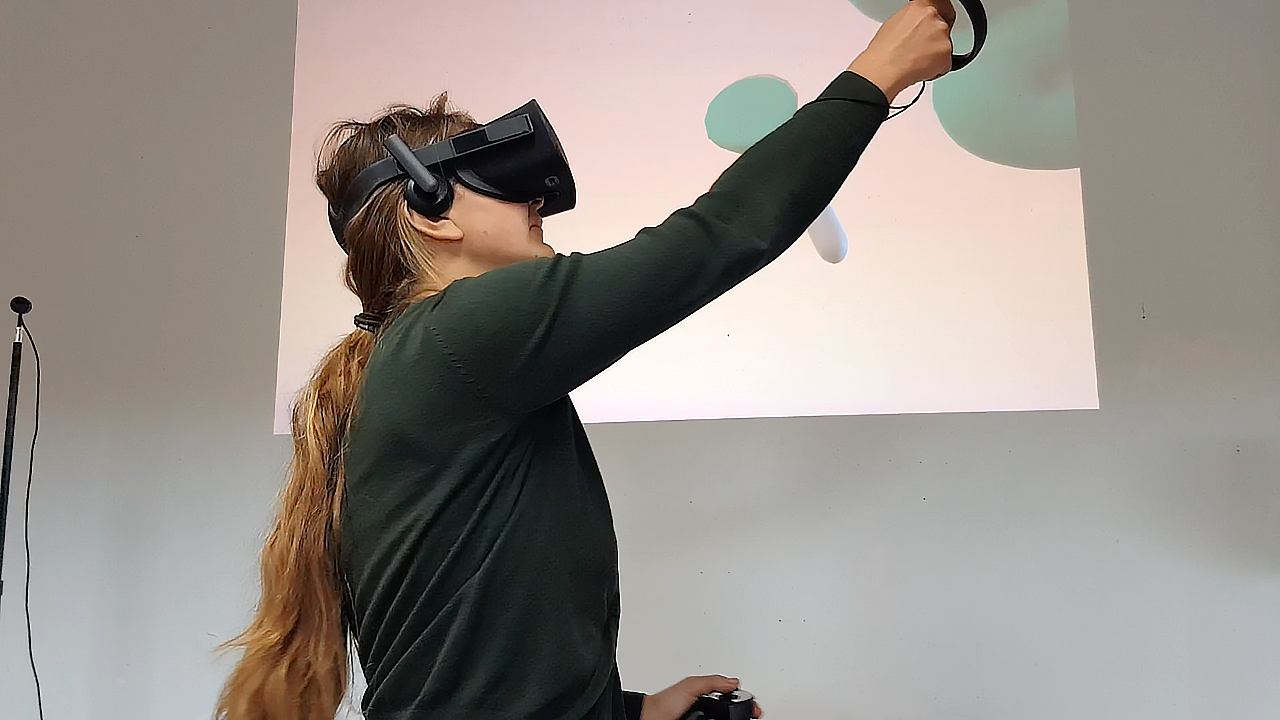
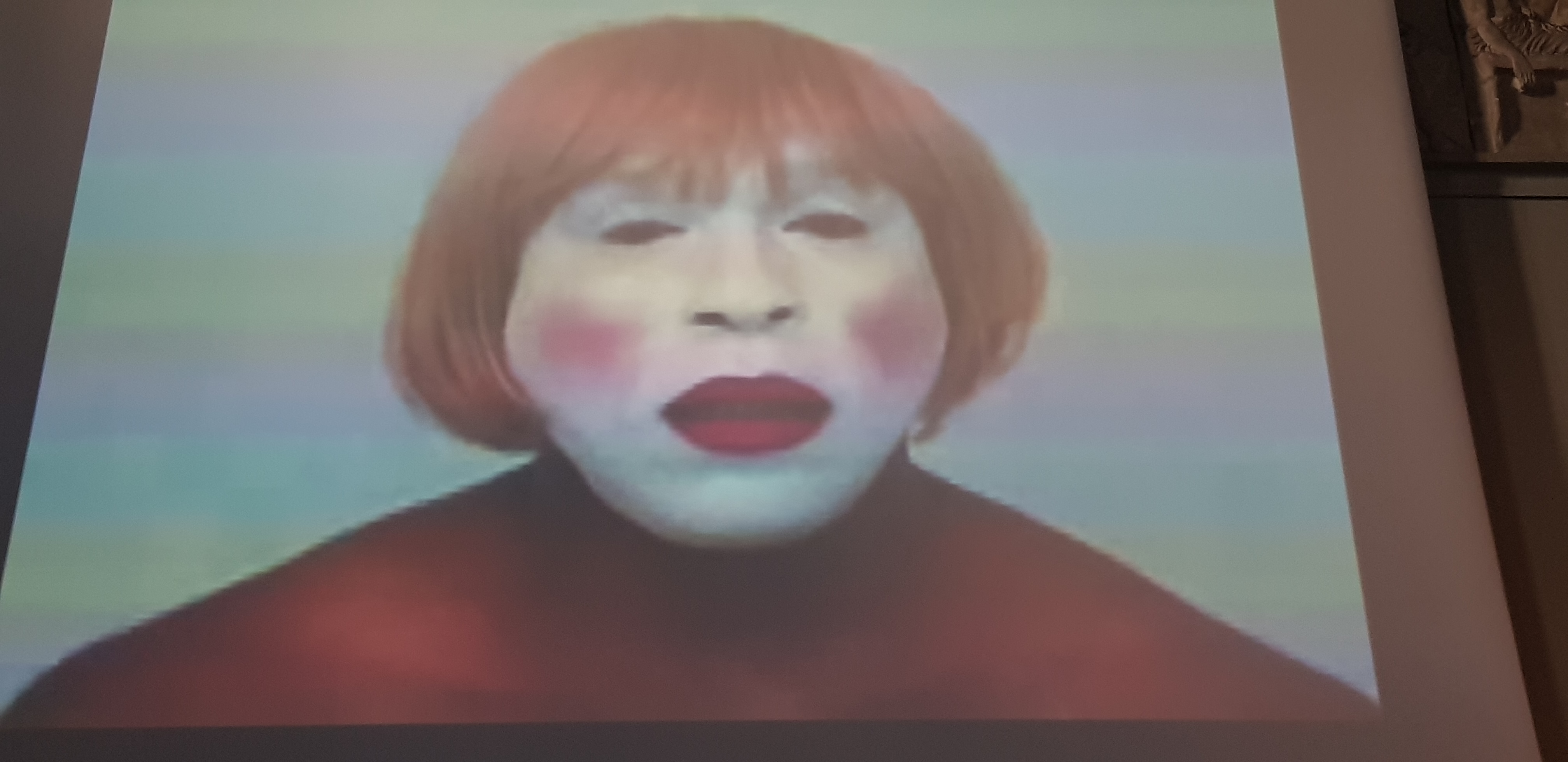 Video work Cheap Blacky by Vaginal Davis screening during lecture performance “Sassafras, Cypress & Indigo Black Screen Images and the (e)motive notion of Freakiness”
Video work Cheap Blacky by Vaginal Davis screening during lecture performance “Sassafras, Cypress & Indigo Black Screen Images and the (e)motive notion of Freakiness”